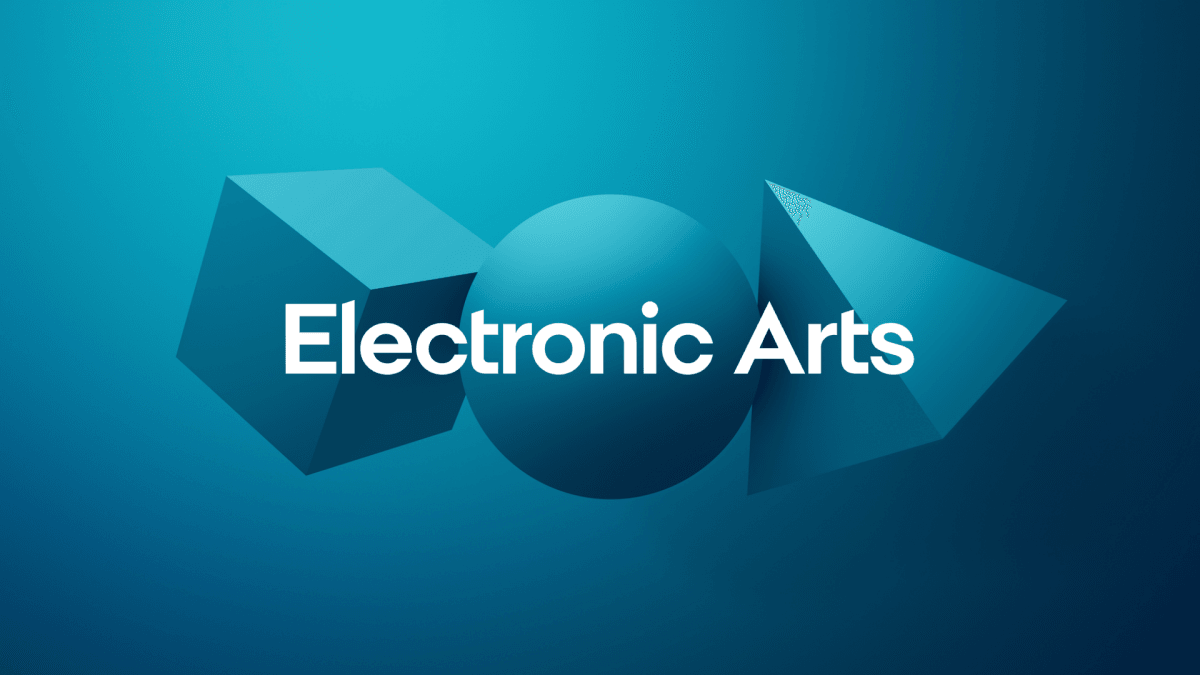The last couple of years have posed significant challenges for the mobile gaming industry. There’s been a noticeable decline in mergers and acquisitions, a rise in layoffs, and funding has become scarce. Unfortunately, this has also led to job losses for some of our colleagues. However, the future of mobile gaming is not entirely bleak.
There are clear signs of recovery as new mobile gaming market trends are emerging across various segments of the industry.
Innovative approaches in emerging genres like hybrid casual games are yielding successful new titles. Moreover, the use of generative AI is accelerating production times and enabling the creation of highly customized content beyond previous human capabilities.
Here’s what you need to know.
The Mobile Gaming Market Has Stabilized
After two years of market correction in 2022 and 2023, the mobile gaming industry reached a more stable phase in 2024. The initial decline—driven by the post-pandemic slowdown, IDFA privacy changes, and economic pressures—was expected. However, instead of a prolonged downturn, 2024 data shows that the market has found its footing, paving the way for sustainable growth in 2025.
While mobile gaming revenue hasn’t returned to the explosive highs of 2020-2021, it remains the most profitable gaming sector, outperforming both PC and console. Players are still spending on in-app purchases, ad-supported models continue to generate billions, and subscription-based monetization is gaining traction.
For game developers and publishers, 2025 is about smart adaptation. With user acquisition costs still high, studios are investing in stronger retention strategies, deeper engagement mechanics, and new monetization opportunities beyond traditional IAPs.
Mobile Gaming Revenue Is Growing
After a period of market correction, mobile gaming revenue reached $92 billion in 2024, reflecting a 3.0% year-over-year growth (Newzoo). This signals the end of industry volatility and a return to steady expansion.
More than just a rebound, this growth reflects a maturing market where developers are optimizing engagement, retention, and monetization strategies. Hybrid models combining in-app purchases, ads, and subscriptions are proving effective, while stronger live operations keep players invested long-term.
With revenue now back on par with 2022 levels, 2025 is shaping up to be a year of sustained growth.
Looking ahead, the mobile gaming market is expected to maintain its upward trajectory beyond 2025. According to Statista, revenue is projected to reach $94 billion by the end of 2025, $98 billion by 2026, and surpass $103 billion by 2027.
With a more predictable growth pattern, developers can focus on refining monetization strategies and improving player retention to capitalize on this steady expansion.

United States, China, and Japan Remain Top Mobile Gaming Markets
The United States, China, and Japan continue to dominate global mobile gaming revenue, collectively generating a significant share of in-app purchase (IAP) revenue (SensorTower, 2025). While these three markets remain at the top, emerging regions are beginning to gain traction, signaling shifts in mobile game monetization trends.
The United States remains the global leader in mobile gaming revenue, driven by a highly engaged player base and strong consumer spending. With a well-established market for both casual and mid-core titles, developers continue to prioritize the U.S. for monetization, particularly through IAP-heavy games.
China, despite ongoing regulatory challenges, holds the second spot. While Android game distribution is fragmented due to government restrictions, iOS revenue alone keeps China at the top of the charts. Mobile RPGs and strategy games dominate the market, with local studios adapting to shifting policies to maintain strong engagement and spending.
Japan, traditionally a mobile-first gaming nation, follows closely behind. The market saw a 7% revenue decline due to economic conditions, but it remains one of the most lucrative regions for gacha-based and role-playing games. High player loyalty and a strong preference for collectible-based mechanics keep Japan’s mobile gaming sector profitable despite temporary slowdowns.
Emerging Markets Are Driving Growth
Emerging markets are becoming a major force in mobile gaming revenue growth, with several regions seeing double-digit increases in consumer spending.
Turkey leads the way with a 28% rise in mobile gaming revenue, followed by Mexico (+21%), India (+17%), and Thailand (+16%).
These countries are benefiting from higher mobile penetration, better internet infrastructure, and improved monetization strategies.
Saudi Arabia is also emerging as a key player, posting a 14% increase in spending (Sensor Tower, 2025). With government initiatives supporting the gaming industry and a growing interest in esports and mobile gaming, the region is quickly becoming a hotspot for developers looking to expand.
Mature Markets Remain Stable, North Asia Faces Challenges
While emerging markets drive growth, mature markets like the U.S. and EMEAR (Europe, Middle East, Africa, and Russia) have maintained steady revenue levels. These regions continue to benefit from an established player base and a well-developed mobile gaming ecosystem.
However, Japan—a historically dominant mobile gaming market—saw a 7% revenue decline. Economic slowdowns and currency fluctuations have impacted consumer spending, making it harder for developers to sustain growth in the region.
The rise of emerging markets signals a shift in the global gaming market. While traditional powerhouses like Japan face economic hurdles, countries like Turkey, India, and Mexico are quickly becoming major revenue contributors. For developers, this presents new opportunities to target high-growth regions with localized content, regional partnerships, and alternative monetization strategies.
RPG and Strategy Games Are the Most Profitable Genres
RPG and strategy games continue to dominate mobile gaming revenue, leading all other genres in terms of in-app purchase (IAP) earnings.
Strategy games generated $17.5 billion in 2024, making them the highest-grossing genre, followed closely by RPGs at $16.8 billion (Sensor Tower, 2025).
While mid-core genres take the top spots, puzzle games—traditionally a casual genre—ranked third with $12.2 billion in revenue, proving that casual players are still a major spending force.
Casino games also remain a lucrative segment, bringing in $11.7 billion, while simulation games reached $6.1 billion. Shooter, action, and sports games rounded out the rankings, with revenues ranging between $2.7 billion and $4.3 billion.
Within these top categories, subgenres play a crucial role in driving revenue.
4X strategy games lead the strategy category, while squad-based RPGs and MMORPGs dominate RPG earnings. Match swap puzzle games remain the highest-grossing within the casual segment, demonstrating the sustained appeal of simple, addictive gameplay.
These trends highlight a mobile gaming market where traditional top genres continue to thrive, but niche subgenres are also playing an increasingly important role in shaping revenue distribution. Developers looking to maximize earnings are focusing on high-engagement mechanics and deeper progression systems, especially within mid-core and strategy-driven titles.

Monopoly GO, Honor of Kings, and Royal Match Remain Top Earners
The top-grossing mobile games of 2024 reflect a mix of established franchises and breakout hits.
Monopoly GO led the charts with $2.2 billion in revenue, followed by Honor of Kings at $1.8 billion and Royal Match at $1.4 billion (Sensor Tower, 2025).
Other high-earning titles included Roblox, PUBG Mobile, and Candy Crush Saga, proving that both mid-core and casual games continue to dominate in-app purchase revenue.
What sets these top earners apart is their ability to sustain player engagement through social features, in-game purchases, and limited-time events. Monopoly GO, for example, leverages nostalgia and competitive multiplayer mechanics, while Royal Match thrives on its rewarding progression system. Meanwhile, battle royale and RPG titles remain highly profitable, especially in mobile-first gaming markets like China and Southeast Asia.
Casual and strategy games continue to lead overall revenue, but survival-based games like Last War: Survival and Whiteout Survival are emerging as serious contenders. Their success highlights the growing demand for deep progression mechanics and seasonal live events that keep players invested long-term.
Mobile Game Downloads Declined Slightly
In 2024, mobile game downloads totaled 49.6 billion, marking a 6% year-over-year decline (Sensor Tower, 2025).
While overall revenue continued to grow, download numbers have been gradually decreasing since 2021. This trend reflects a maturing market where industry consolidation, shifting user behaviors, and broader challenges in the tech sector have led to slower install growth.
Despite this decline, some markets saw an increase in downloads. Indonesia and Saudi Arabia were among the few regions that experienced growth, highlighting the expanding mobile gaming audience in emerging markets. While established regions are seeing fewer new installs, engagement and monetization within existing player bases remain strong, ensuring that mobile gaming continues to thrive despite fewer overall downloads.
This shift signals a greater emphasis on long-term player retention rather than sheer acquisition. Developers are focusing more on keeping existing players engaged through live events, social mechanics, and new content updates rather than relying on constant new user influx.
Simulation and Puzzle Games Are Driving the Most Downloads
In 2024, simulation and puzzle games led mobile game downloads, each accounting for 20% of total installs (Sensor Tower, 2025). While simulation saw a slight 0.4% increase, puzzle games experienced a 3% decline. Arcade games remained popular despite a 12.5% drop, holding 19% of total downloads.
Strategy games, while representing only 4% of total downloads, generated 21.4% of total revenue, highlighting their strong monetization potential. Meanwhile, lifestyle and action games saw sharper declines, whereas strategy games experienced a 14.5% surge in downloads, signaling growing player interest in more complex, long-term engagement mechanics.
Among subgenres, arcade platformers and runner games were the most downloaded, largely driven by the continued success of Subway Surfers. Simulation subgenres, including driving and flight simulators, also saw strong player engagement, with titles like My Supermarket Simulator 3D and Vehicle Masters contributing to their popularity.
Party, Shooter, and Sports Games Are the Most Saturated
Breaking into certain mobile game genres is becoming increasingly difficult, with party, shooter, and sports games among the most saturated markets. These genres are dominated by established titles with massive player bases, making it challenging for new games to gain traction.
The competitive nature of shooter and sports games means that major franchises with strong brand recognition, such as Call of Duty Mobile and FIFA Mobile, continue to dominate. Similarly, party games have seen a surge in popularity, but the space is heavily occupied by well-known multiplayer experiences, leaving little room for newcomers.
Other highly saturated genres include match, tabletop, and strategy games, where players tend to stick with a few trusted titles rather than frequently trying new releases. Even puzzle and RPG games—historically strong performers—are seeing intense competition, requiring new entries to have unique mechanics or innovative monetization strategies to stand out.
For developers looking to enter these markets, differentiation is key. Unique gameplay features, strong community engagement, and innovative monetization strategies are essential to breaking through the noise and carving out a space in these crowded genres.

Roblox Is the Most Played Mobile Game in the World
Roblox continues to dominate the mobile gaming space, standing as the most played game globally. With 129.7 million monthly active users and nearly 76 million daily players, it remains unmatched in engagement. What sets Roblox apart is its user-generated content ecosystem, where millions of games are created and played within the platform, keeping players constantly engaged.
Players aren’t just logging in—they’re spending an average of 28 minutes per session, with 4.2 sessions per day. This level of interaction highlights the platform’s ability to keep users coming back, making it one of the most immersive and engaging mobile experiences available.
Other top-played games include Candy Crush Saga, Free Fire x NARUTO SHIPPUDEN, PUBG Mobile, Royal Match, Honkai: Star Rail, and Brawl Stars. These titles span across various genres, from puzzle to battle royale and RPGs, reflecting the diverse interests of mobile gamers.

Surge in Mobile Game Advertising
The mobile gaming industry saw a major expansion in advertising throughout 2024, with the number of advertisers exceeding 259,700—a 60.4% year-over-year increase. This surge reflects the growing competitiveness of the market, where developers are ramping up ad spending to capture player attention. According to SocialPeta, this upward trend is set to continue, with projections indicating that the number of advertisers will surpass 300,000 by 2025.
While advertiser numbers soared, the growth of creative assets slowed. In 2024, mobile game ad creatives reached 46.2 million, marking a 15.4% increase from the previous year. However, this growth was significantly lower than the 29.8% rise recorded in 2023, signaling a shift in marketing strategies. Instead of sheer volume, advertisers are focusing on higher-quality creatives, data-driven optimization, and AI-assisted ad production to maximize performance.
Looking ahead, industry projections estimate that by 2028, global creative assets will surpass 100 million, further intensifying the competition in mobile game marketing. With rising advertising costs and a crowded market, the focus is shifting toward efficiency, personalization, and engaging ad formats that drive long-term player retention rather than just installs.

AI Tools Aid Game Development
Since late 2022, when ChatGPT brought generative AI into the mainstream, artificial intelligence has become an integral part of mobile game development. In 2025, AI-powered tools are being used to accelerate production, increase creativity, and streamline workflows across the industry. Developers and publishers now rely on AI to generate code, images, visual assets, text, and even entire game environments, making game creation faster and more efficient than ever.
AI is particularly promising for building expansive virtual worlds, a major challenge for metaverse-style games. By automating content generation, AI can populate virtual spaces with dynamic NPCs, immersive storylines, and interactive environments, allowing developers to scale experiences much faster.
The adoption of AI in gaming is widespread, with 73% of game studios already using AI tools and 88% planning to integrate them in the future. However, enthusiasm for AI varies by role. While 85% of executives report using AI, only 58% of artists do, with many remaining cautious due to concerns about job security and creative integrity.
The impact on productivity is already significant—nearly 40% of studios report efficiency gains of over 20%, while 25% have seen costs drop by at least 20%. Game studios are leveraging AI primarily for design inspiration, storyboarding, narrative generation, voice synthesis, AI-driven NPCs, and ad creative production.
Hybrid Monetization Remains a Big Trend
This year, many games are using a hybrid monetization strategy, making it another big mobile gaming market trend.
This means they combine different ways of making money, like in-app purchases (IAP), ads, and subscriptions. By using more than one way to make money, game developers can offer experiences that appeal to different types of players. This helps increase the lifetime value (LTV) of a game, which is how much a game earns from a player over time.
One tool that helps with this strategy is in-app bidding.
This method optimizes how advertisements are shown in games by automatically choosing the highest paying ad for each ad spot. This not only increases revenue from ads but also saves time for the teams managing the ads, allowing them to focus more on improving the game itself.
The more game developers understand their players’ preferences through data analysis and segmentation, the better they can use these hybrid strategies to increase their revenue. This approach also tends to make players happier and more likely to keep playing the game.
Many gaming studios are moving to this hybrid model because it lets them get the most value from each player. With in-app bidding taking care of ad monetization automatically, game teams have more time to create fun and engaging experiences that bring players back again and again. This flexibility is a key advantage in today’s competitive mobile gaming market.
Meta Layers Drive Player Engagement
To boost user acquisition, retention, engagement, and spending, developers began adding various meta-layers to their games.
As a result of that, we saw novel approaches like meta layer monetization – one of the mobile gaming market trends that utilizes additional game content for IAP monetization.
There are many meta layers developers can choose from and which they will add to their game depends on many different factors, primarily the game’s genre and core gameplay.
The meta feature that’s present in most top-grossing games is character collection. It’s particularly popular with mid-core games – 88% of them.
Social clans are the second most prevalent meta layer and work exceptionally well with character collection. SensorTower’s research showed that “72 percent of the top games with this combination see players spend an average of over 3 hours per month”.
Live Ops Becomes an Essential Monetization Feature
Next up on our list of gaming trends are Live Ops and particularly in-game events. Developers who are looking to boost user retention should take note of this feature – it’s one of the biggest mobile gaming trends.
SensorTower’s research shows that games that release events periodically saw an increase in both engagement and retention – two essential mobile game KPIs. Usually, that translates to an increase in revenue.
For example, the card game Marvel Snap saw excellent results with this approach. The game saw a significant surge in revenue for each event that was released.
But, remember to plan for Live Ops early on. Unity’s research shows that more than 30% of developers are implementing Live Ops solutions within the first week of development.
More Streaming Platforms Will Enter the Mobile Games Market
As you probably know, subscriptions have been a popular monetization method for a while now. However, a new type of subscription monetization is evolving – external game subscriptions.
We see this with Netflix – a new player in the mobile gaming market. Netflix’s games are only available to users who are subscribed to its streaming platform, making them exclusive access games.
What’s interesting about this approach is that developers for Netflix games don’t have to worry about monetization features. Instead, they can focus on game content and provide users with the most engaging experience.
While Netflix’s offering of games is modest, it managed to boost its gaming downloads by 194%.
Apple Arcade and Google Play Pass operate on a similar subscription model – players need to subscribe to these platforms to get access to various games.
These platforms offer mostly puzzle, arcade, and simulation games.
In 2025, we expect to see more streaming platforms like Netflix enter the mobile gaming market. Not only that, but we expect to see more developers create and sell games to platforms like Netflix, as that’s a safe option and a surefire way to earn.

Collaborations with Popular IPs and Influencers Bring in New Players
In 2025, a big mobile gaming market trend is teaming up with companies from different industries to create special events within their games.
A good example of this is the game Stumble Guys, which worked with several well-known brands like Hot Wheels, NERF, Barbie, and Mr. Beast to bring new, themed content to the game for a short time. These events added new character outfits, game maps, and changes to the game’s play style that matched the theme of the collaborating brand.
For instance, the event with NERF introduced a new map and a mode where players could play in a first-person shooter style, typical of NERF games. These collaborations were generally very successful in attracting more players to Stumble Guys. The NERF event, for example, boosted game downloads by 120% in its first week. However, the Barbie event didn’t attract many new players, likely because the Barbie brand didn’t resonate as much with the game’s existing audience.
The most successful of these events was the collaboration with Mr. Beast, a popular YouTuber, which resulted in a 600% jump in downloads when it launched. T
his event included new game modes, a special map, and a unique in-game currency called ‘Beast Bucks,’ which could be used to buy Mr. Beast-themed items. The huge online following of Mr. Beast helped give the game a lot of exposure and attract a large number of new players.
Mobile Gaming Market Trends: Conclusion
Even in times of economic turbulence, the mobile game market is growing and evolving. To navigate it successfully, game developers need to adjust to any market changes and push innovations forward.
If you need any help, make sure to reach out – we’re an experience mobile game marketing agency that can take your game to the next level!
Data Sources
- SensorTower, State of Mobile 2025 Report
- Newzoo, Global Games Market Report 2024
- Statista, Mobile Gaming in 2025 and Beyond
- AppMagic, Top Mobile Games and Publishers
- eMarketer, Mobile Gaming 2025
- Venturebeat, Mobile Gaming Revenue is Up, 2025







Comments